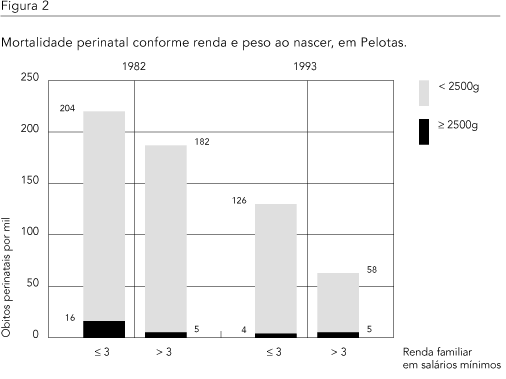Trends in perinatal mortality were studied in Pelotas (southern Brazil) through surveys carried out in 1982 and 1993. All hospital births and perinatal deaths were assessed by daily visits to all maternity hospitals. Cause of death was determined through review of hospital case notes, interviews with pediatricians, and autopsies. The perinatal mortality rate decreased by 31% over the decade. Under-recording of perinatal deaths was reduced from 42.1% in 1982 to 6.8% in 1993. A reduction of 58% in antepartum fetal deaths was observed in 1993 (47% for deaths due to immaturity and 62% for other causes). The rate of deaths due to asphyxia increased from 4.5/1.000 in 1982 to 8.3/1.000 in 1993. Female babies showed a significantly lower perinatal mortality rate than males. Decreases in perinatal mortality rates in 1993 were observed in virtually all birthweight and family income groups. The most important reduction (68%) was observed for low birthweight babies belonging to high-income families. As in 1982, preterm babies were three times more likely to die in the perinatal period than babies with intrauterine growth retardation. Despite major decreases in perinatal mortality over the decade, large gaps between different social groups persisted.
Perinatal Mortality; Mortality; Birthweight; Child Health; Epidemiology









